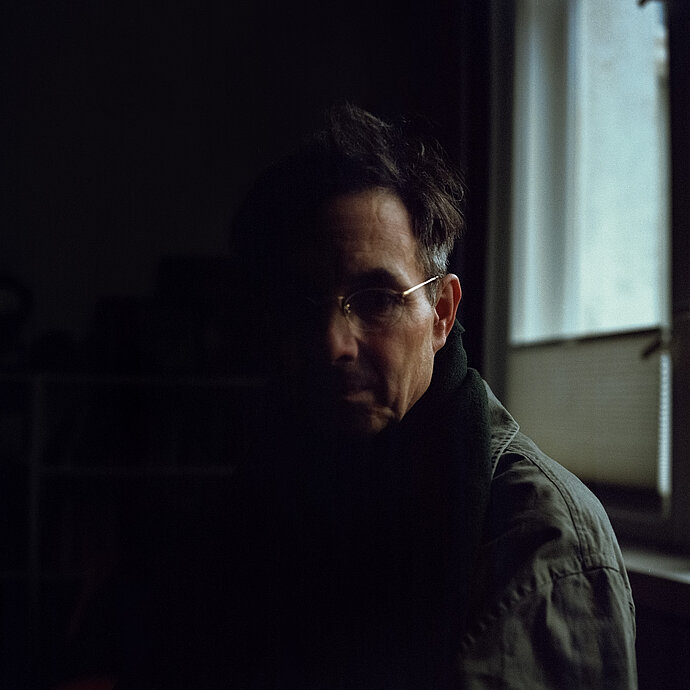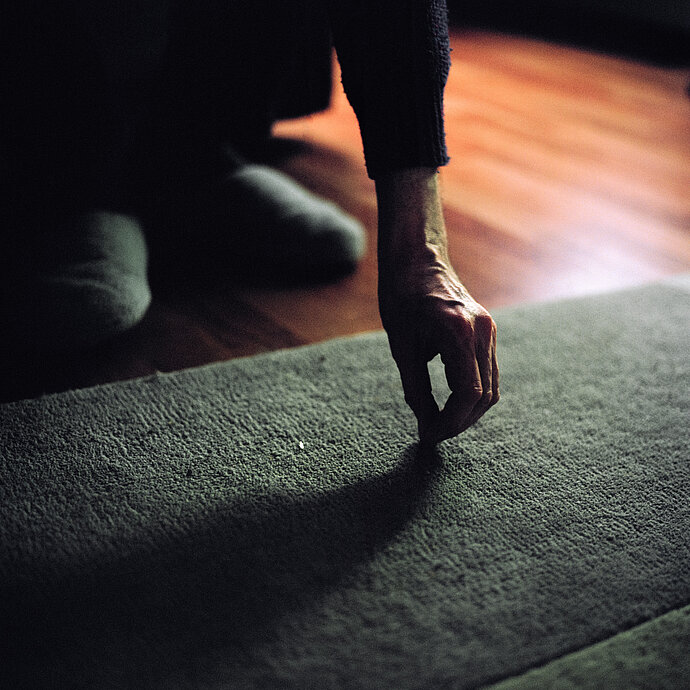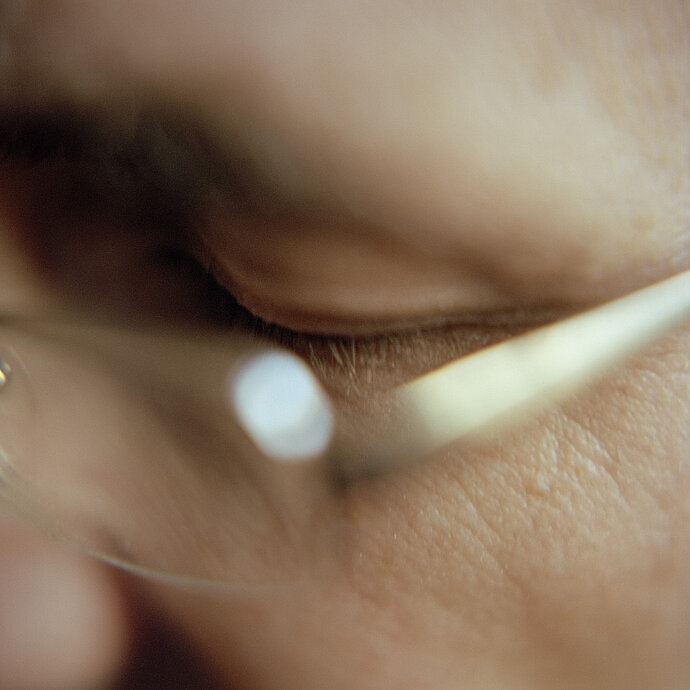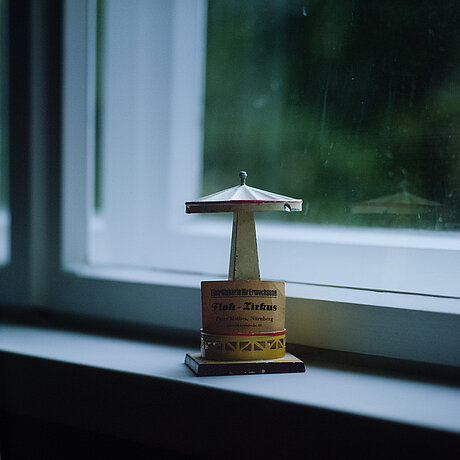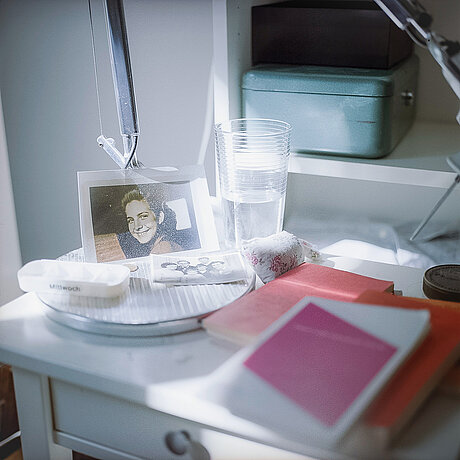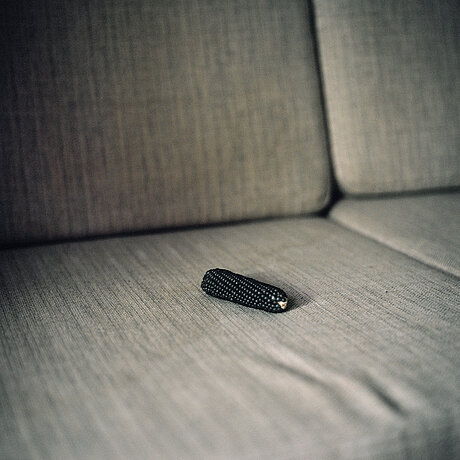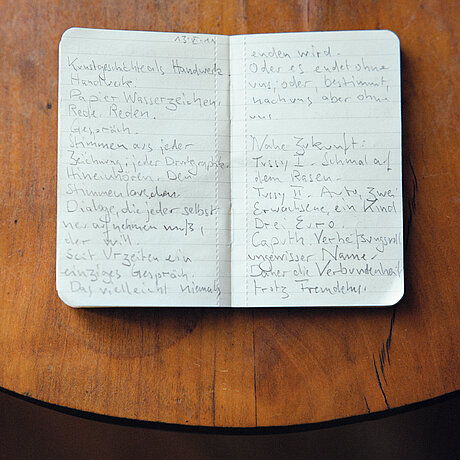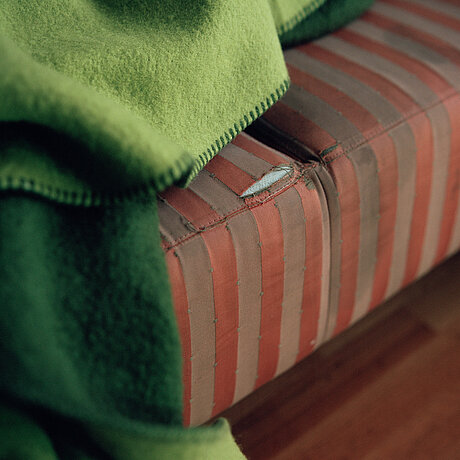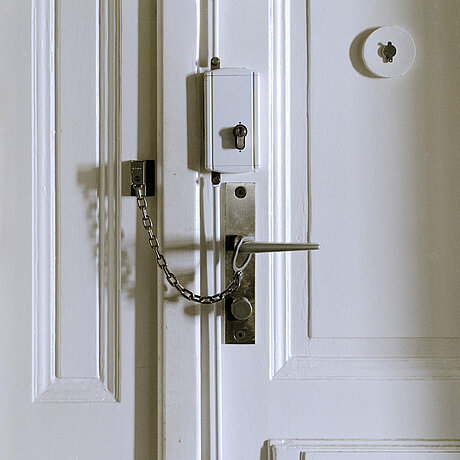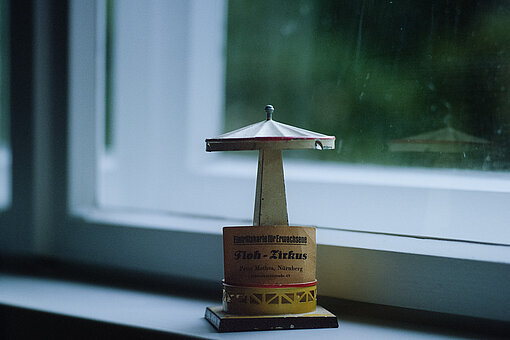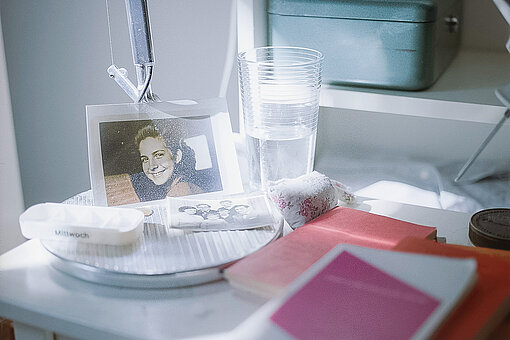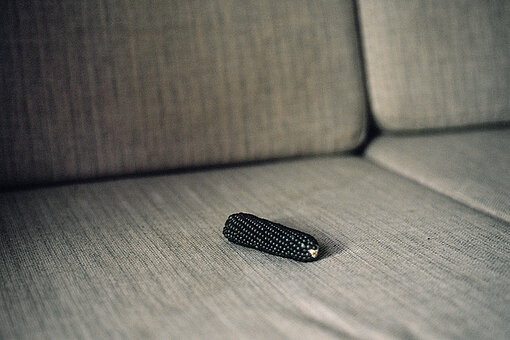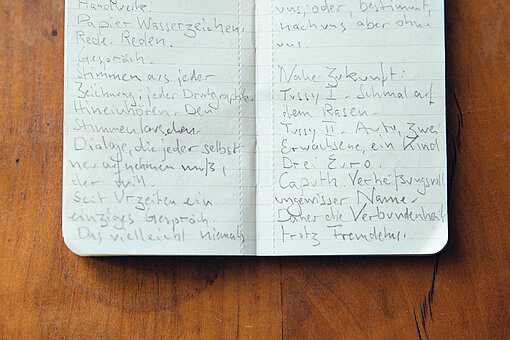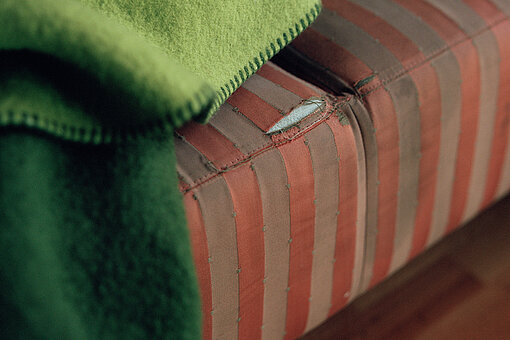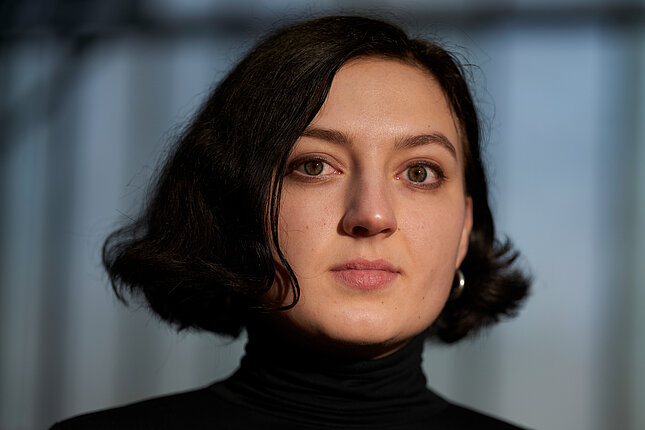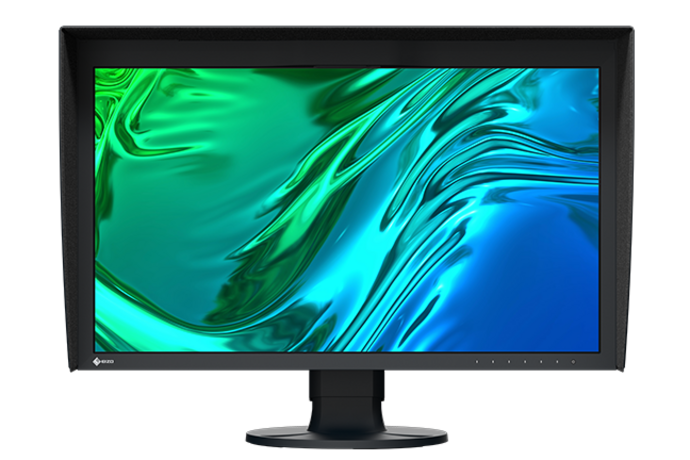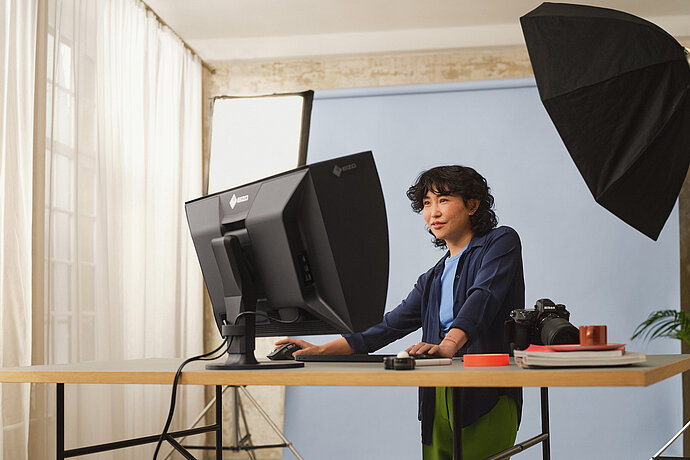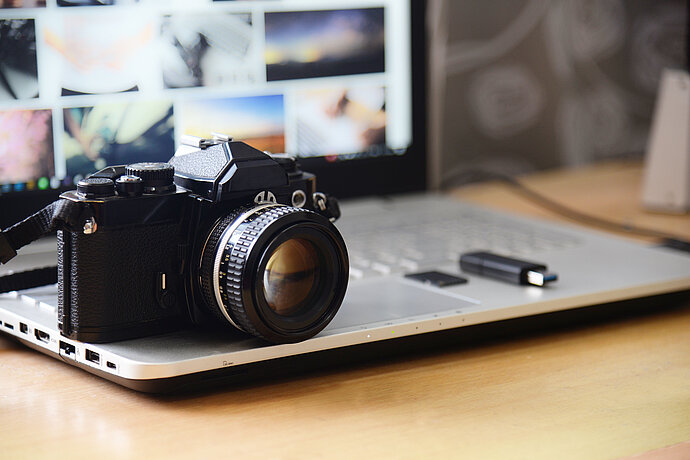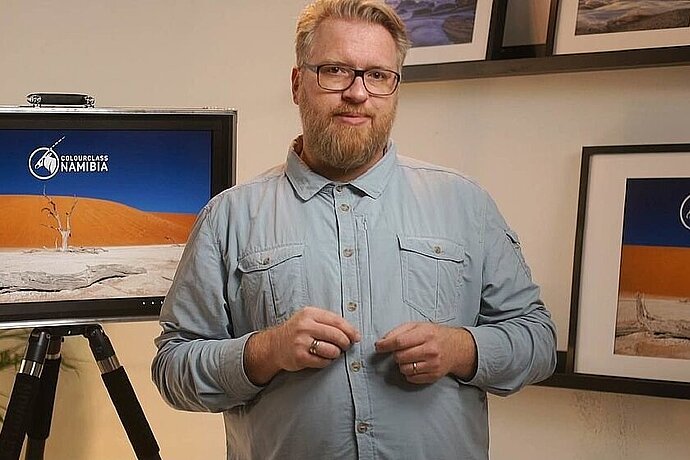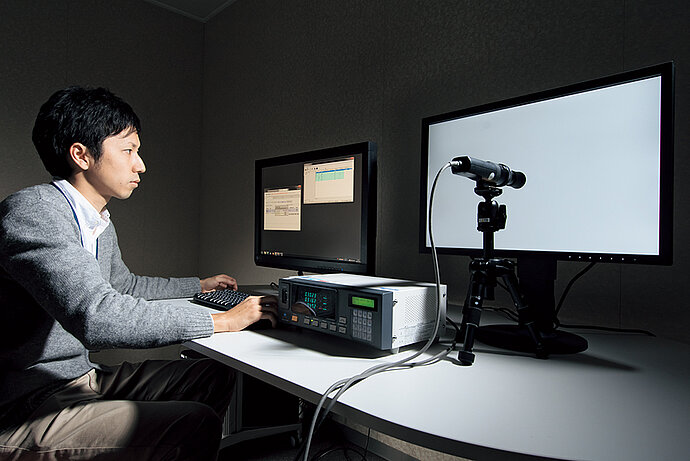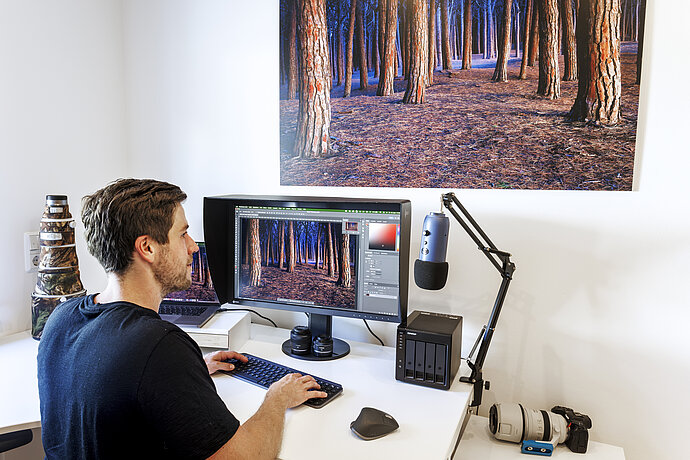At the age of 54, the father of photographer Lilli Nass fell ill with Alzheimer's disease. The Berliner decided to process her father's illness photographically. With the resulting series "cursare," she took part in the BFF's New Young Talent Award and won first place. As the main prize of the competition, Nass was able to enjoy a ColorEdge CG2700X monitor. Here she gives us insights into the creation of the series and her photographic work.
COLOREDGE REFERENCE
Moments worth
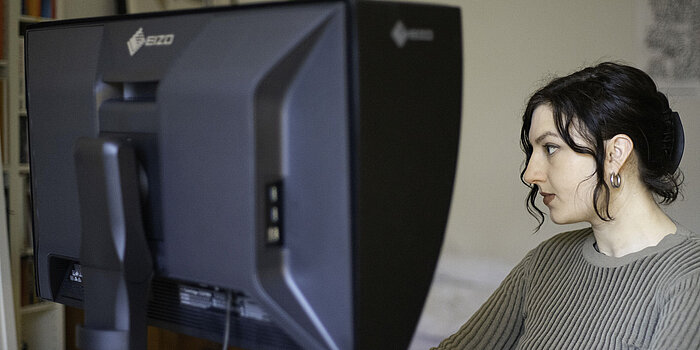
Beginning
"cursare" is the Latin word for "running back and forth," a typical behavior of dementia patients who often have a strong urge to move. It often occurs together with "nesting" on clothing and small objects. An activity that seems meaningless to outsiders, but which opens up a new level of perception for the sick person and possibly gives him or her a foothold. This explains why Lilli Nass named her work about her father's dementia disease. When he was diagnosed, he was just 54 years old; Nass was 19.
The nucleus of Nass's series was three analog images taken with a Zenza Bronica 6 x 6 medium format camera. For 18 months, these three images lay in a drawer until Nass decided to apply for the BFF's New Young Talent Award with a series on dementia. Beforehand, she had an intensive exchange with her mother about whether and how to publicly address her father's illness. At that time, her father was already no longer in a position to make this decision himself. On the last day of the application period, the decision was made to submit an application concept. After ten intensive hours at the computer, it was ready and sent off.
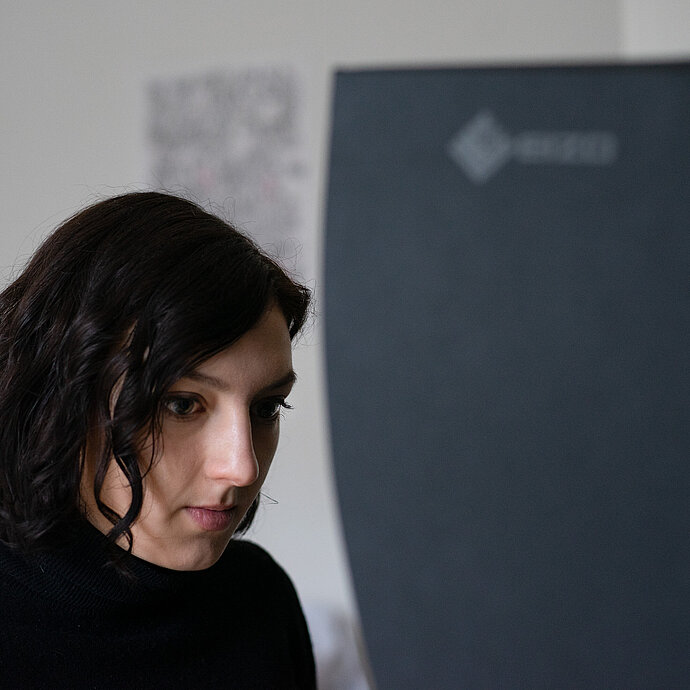
Final
Nass was thus able to achieve an important stage victory: Together with eleven other finalists in the final round, Nass was invited to a workshop in Hamburg. There, she worked on the concepts together with her personal mentor Maximilian König and the other mentors and finalists. After that, it was off to the implementation phase. "That wasn't so easy, because my parents were in rehab in December, which meant I couldn't start implementing them until January," Nass reports.
Analog medium format
Nass photographed the series using analog medium format on Kodak Portra 400 film. "I wanted to work analog to force myself to be careful. On the one hand, to really capture only the moments that are worth it. On the other hand, I wanted to pay proper respect to my father in such an intimate series," Nass explains of her camera choice. In medium format, the images are created square. Nass sees that as an advantage.
In the first workshop and in the implementation phase, the question of how best to approach the subject of dementia photographically arose again and again. Two perspectives had emerged: On the one hand, the objects with which Nass's father likes to occupy himself and in which he shows the typical "nesting" as well as other detailed shots turned out to be central motifs. On the other hand, there were numerous still lifes of real-life situations, such as of her father's nightstand, as well as some portrait shots. Finding a good balance and a common thread here was the main task at another workshop in March in Zingst. Here it was then a matter of completing the photographed series for the final submission to the jury evaluation.
Won
Here, too, Nass and mentor König seem to have had a good hand. After all, Nass' work was awarded first prize. Nass's photo series consists of numerous close-up shots, situations and observations that allow the viewer to get a feel for the world of a person suffering from dementia. Nass shows seemingly random objects such as a small, black corncob or the shoehorn and pencil that her father likes to carry around in his pants pocket and feel. She shows mainly tightly cropped shots of her father's hand or face. In general, Nass's images are very condensed.
Another image shows Nass's father nibbling away at a clean spot on the carpet, while ten inches away lies a crumb. Other images show more still-life-like sections of Nass' father's living space, such as the nightstand with his mother's portrait and a family picture, or a portrait of Nass' father photographed from behind looking off into the distance. "My goal was to take in my father's inner perspective and ask myself how he perceives his world," is how Nass describes her approach. She was able to do full justice to this claim, and not only in the opinion of the jury. With her pictures, Nass offers the viewer numerous points of reference for imagining the world of a person suffering from dementia. A world that often seems to consist of confusion, lostness, loneliness and rituals. A world in which, if anything, the long-too-past is still present.
"My father hasn't recognized us for a long time," Nass explains. "But he knows we're close, and he relates to us differently than he does to strangers." For Nass, working on her photo series also helps her deal with her father's illness. In the meantime, his illness has progressed to the point that he lives in a home and requires a lot of care.
ColorEdge CG2700X
As a non-cash prize, Lilli Nass was delighted to receive a monitor. The new 4K professional monitor ColorEdge CG2700X from EIZO has been a great help to her ever since: "EIZO also provided the school with two new devices for our final exhibition, but it's already terrific to have your own ColorEdge monitor at home," reports Nass, visibly excited, and goes on to explain: "You only realize what you've been missing when you have a ColorEdge." This, he says, is expressed primarily by the absolutely precise view of the file. Nass can thus prepare images for printing optimally and rely on them coming out of the printer exactly the same. "I use much less paper since then. In addition, the integrated calibration ensures that the monitor is perfectly calibrated at all times," says Nass, who is very satisfied.
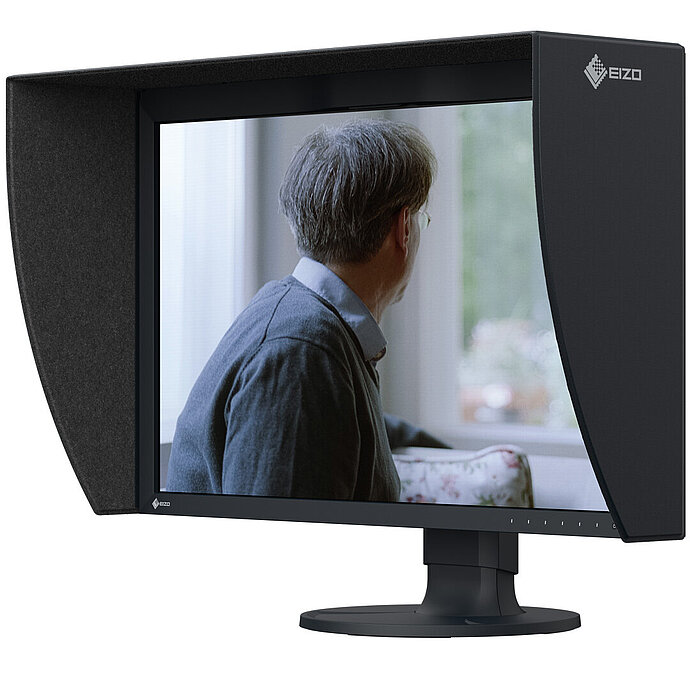
Future
Winning the New Young Talent Award, however, is not the end of the series for Nass. She continues to work on it and is constantly developing it further.
Whereas in the beginning the focus was more on detail shots, in the meantime still lifes and portraits take up more space. Nass plans to submit "cursare" as the final project of her studies at the Ostkreuzschule für Fotografie and later publish it as a book. Nass sees her professional future in the field of magazine and portrait photography.
